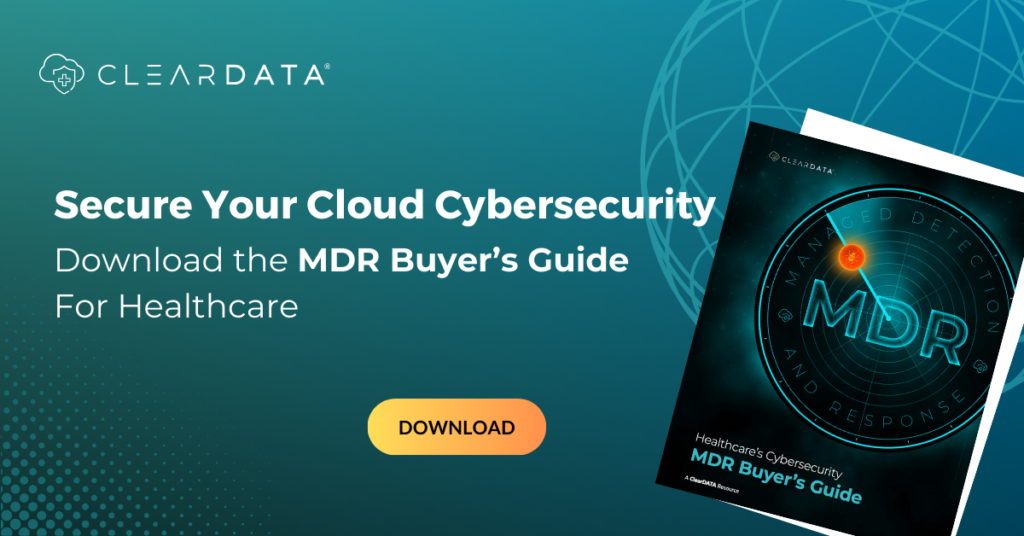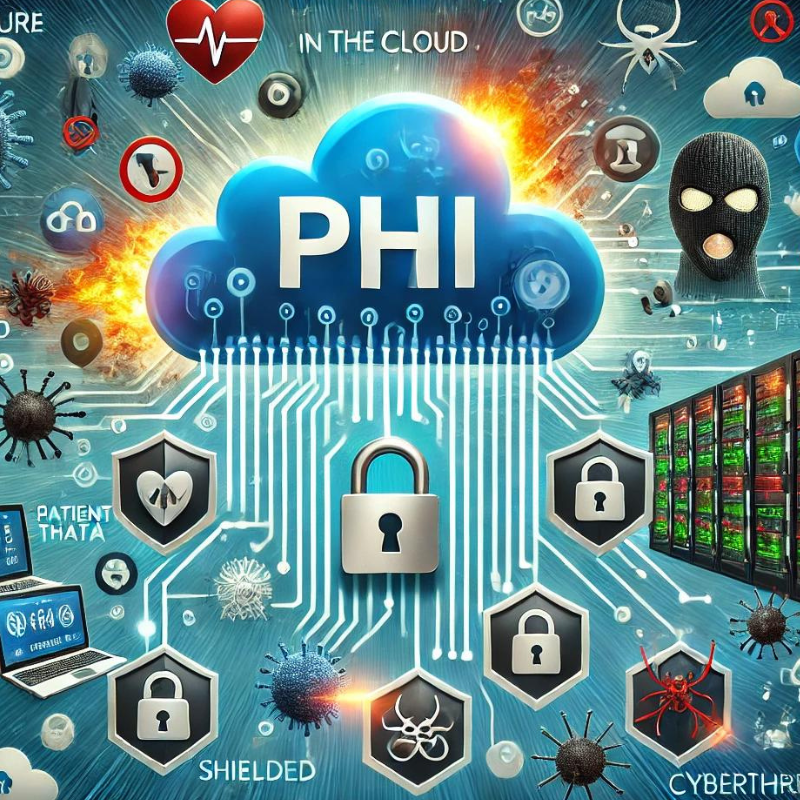Best Practices for Managing and Protecting PHI in the Cloud
Protected Health Information (PHI) is at the core of healthcare, containing sensitive data that must be safeguarded to protect patient privacy and maintain compliance with regulations like HIPAA. As cyber threats continue to evolve, healthcare organizations must implement robust strategies to ensure compliance and data security. In this blog, we’ll cover the best practices for working with PHI, including how to incorporate technical safeguards, staff education, and regulatory adherence. But first, let’s talk about why securing your patients’ PHI is so crucial.
Understanding PHI and Its Importance
Protected Health Information isn’t just data—it’s the key to a person’s most private and sensitive health details. PHI refers to any information that relates to an individual’s health status, healthcare services, or payment for those services that can be linked to a specific person. This includes medical records, insurance information, billing details, and even demographic data when tied to health-related services.
But why is protecting PHI so critical? Because the consequences of failing to do so can be catastrophic—not just for the organization, but for the individuals whose data is compromised.
The High Stakes of PHI Breaches
When PHI is exposed, the ripple effects are far-reaching. Patients face potential identity theft, financial fraud, and personal distress when their sensitive health information falls into the wrong hands. For healthcare organizations, a breach can result in severe legal penalties, costly lawsuits, reputational damage, and a loss of patient trust that can take years to rebuild.
Consider the recent 2023 data breach at HCA Healthcare, one of the largest healthcare systems in the U.S., where the personal data of approximately 11 million patients was compromised. The breach involved PHI such as patient names, appointment details, treatment locations, and insurance information. While the exposed data did not include medical records or financial information, the scale of the breach highlighted just how vulnerable healthcare organizations can be—and how damaging even partial exposure of PHI can be to public trust and regulatory compliance.
The Financial Fallout
HIPAA violations due to PHI breaches can result in fines ranging from thousands to millions of dollars, depending on the severity and extent of the breach. Beyond regulatory penalties, the cost of remediation, legal settlements, and reputational repair can cripple organizations both financially and operationally. In 2023 alone, the average cost of a healthcare data breach reached $10.93 million per incident—the highest of any industry.
The Erosion of Trust
More than the financial hit, PHI breaches erode the fundamental trust that patients place in healthcare providers. When individuals seek medical care, they do so with the belief that their personal information is safe. A breach undermines this trust, often leading to patient attrition, negative media coverage, and long-term damage to the brand’s reputation.
Given these high stakes, protecting PHI isn’t just about ticking compliance checkboxes. It’s about safeguarding the integrity of patient care, maintaining operational resilience, and preserving public trust.
Now that the benefits of protecting PHI are clear, here are some best practices for working with PHI to ensure that your patients’ data remains confidential and secure.
Best Practices for Working with PHI
1. Implement Strong Technical Safeguards
One of the most effective ways to protect PHI is by leveraging technical safeguards that limit unauthorized access and enhance data security. These include:
- Encryption: Encrypting PHI both in transit and at rest ensures that sensitive data remains unreadable to unauthorized users.
- Access Controls: Implementing role-based access controls (RBAC) restricts PHI access to only those who need it for their job functions.
- Multi-Factor Authentication (MFA): Requiring multiple forms of authentication adds an extra layer of security, reducing the risk of unauthorized access.
- Regular System Audits: Conducting routine audits helps identify vulnerabilities and potential breaches, allowing for proactive security measures.
- Secure Cloud Storage: Storing PHI in a secure, compliant cloud environment can minimize risks associated with on-premises storage. Learn more about securing PHI in the cloud here.
2. Educate and Train Employees Regularly
Human error is one of the leading causes of PHI breaches. Ensuring that employees understand their role in protecting PHI is essential. Best practices for employees working with PHI include:
- Annual HIPAA Training: Regular training sessions keep staff informed on the latest security protocols and compliance requirements.
- Phishing Awareness: Educate employees on how to recognize and respond to phishing attempts that may compromise PHI.
- Clear Policies and Procedures: Establishing clear policies on PHI handling, sharing, and disposal ensures staff members follow best practices.
- Incident Response Training: Employees should be trained on how to report security incidents promptly to minimize potential damage.
3. Maintain Compliance With HIPAA and Other Regulations
HIPAA establishes the minimum security and privacy standards for PHI. To remain compliant, healthcare organizations should:
- Follow the HIPAA Security Rule: This rule outlines administrative, physical, and technical safeguards for PHI. For more details, refer to this HHS guide.
- Adopt NIST Security Frameworks: The National Institute of Standards and Technology (NIST) provides additional security recommendations for protecting PHI. Learn more about the NIST security guidelines.
- Conduct Regular Risk Assessments: Identifying vulnerabilities in your systems allows for proactive security improvements.
- Ensure Business Associate Agreements (BAAs): Third-party vendors handling PHI must sign BAAs, ensuring they comply with security requirements.
4. Monitor and Manage PHI Effectively
Managing PHI effectively requires healthcare organizations to know where sensitive data is stored and how it is accessed. Best practices for managing PHI include:
- Data Mapping: Identifying all locations where PHI is stored and transferred to minimize exposure risks.
- Role-Based Data Access: Ensuring that only authorized personnel have access to specific PHI records.
- Audit Logs and Monitoring: Keeping logs of who accessed PHI and when helps track potential security threats.
5. Establish a Culture of Security
Security should be ingrained in an organization’s culture. Healthcare providers can reinforce this through:
- Leadership Involvement: Ensuring executives prioritize PHI security and compliance.
- Encouraging Incident Reporting: Creating a system where employees feel comfortable reporting potential security concerns.
- Continuous Security Improvements: Regularly updating policies and procedures to adapt to evolving cybersecurity threats.
Implementing these best practices for working with PHI is essential for maintaining patient trust, preventing data breaches, and ensuring compliance with regulatory requirements. By securing PHI through technical safeguards, educating staff, and adhering to HIPAA regulations, healthcare organizations can protect sensitive patient data while maintaining operational efficiency.
How ClearDATA Can Help Secure Your PHI in the Cloud
Protecting PHI in today’s complex healthcare landscape requires more than just strong policies—it requires the right partner. ClearDATA specializes in securing PHI in the cloud, helping healthcare organizations meet rigorous compliance standards while optimizing operational efficiency.
Our services include:
- Comprehensive Cloud Security: We implement advanced security measures, including encryption, access controls, and real-time monitoring, tailored to your specific needs.
- Regulatory Compliance Support: ClearDATA ensures your cloud environment meets HIPAA, HITRUST, NIST, and other key regulatory standards.
- Risk Management Solutions: Our proactive risk assessment and continuous monitoring tools help identify vulnerabilities before they become threats.
- Healthcare-Specific Expertise: As the only healthcare-exclusive cloud provider with an AWS MSSP Level 1 Competency, we understand the unique security challenges facing the industry.
Ready to secure your PHI with confidence? Contact one of our healthcare cloud security experts today to learn how ClearDATA can help protect your sensitive patient information while enabling growth and innovation.
FAQ
What is the most efficient means to store PHI?
The most efficient way to store PHI is in a secure, encrypted cloud environment that complies with HIPAA regulations. Cloud storage providers specializing in healthcare security, such as ClearDATA, offer enhanced protection, backup solutions, and access controls that minimize risk.
Does PHI require more protection than PII?
Yes. While Personally Identifiable Information (PII) requires protection, PHI is subject to stricter regulations due to its sensitive nature in healthcare. PHI includes medical history, treatments, and financial information, making compliance with HIPAA and other security measures essential.
What is considered protected health information (PHI)?
PHI includes any individually identifiable health information transmitted or maintained by a covered entity. This can be in electronic, paper, or oral form and includes names, birth dates, medical records, Social Security numbers, and insurance information.
Secure Your Healthcare Cloud



